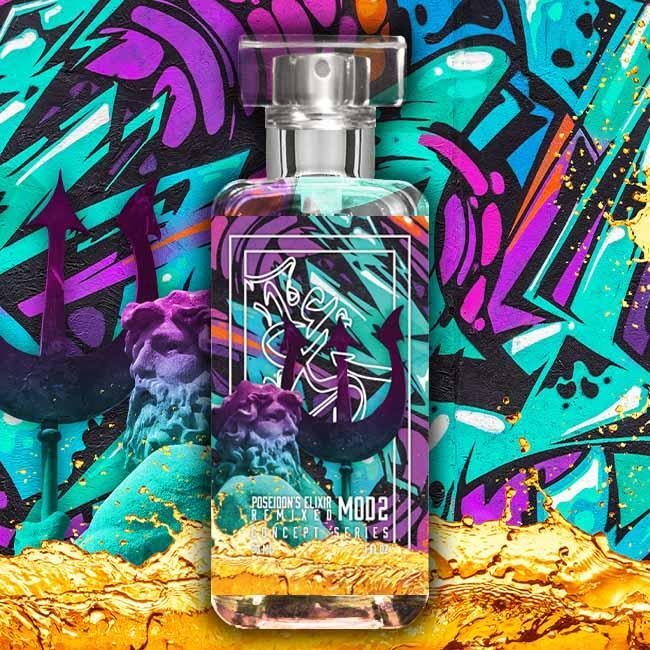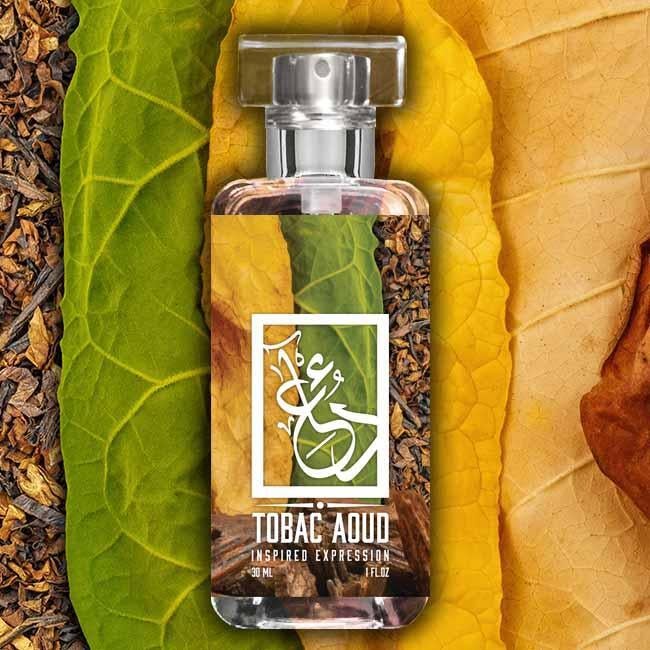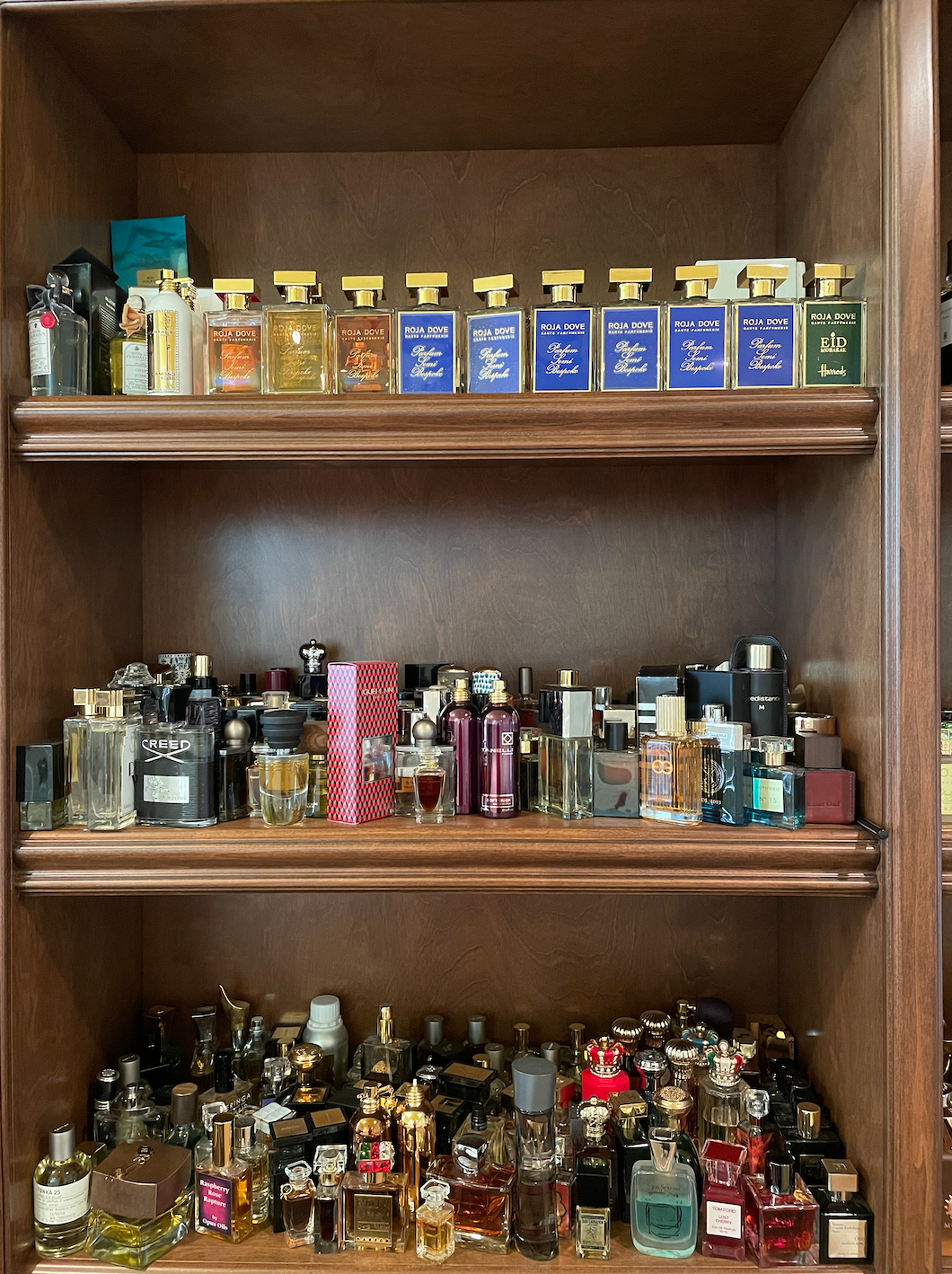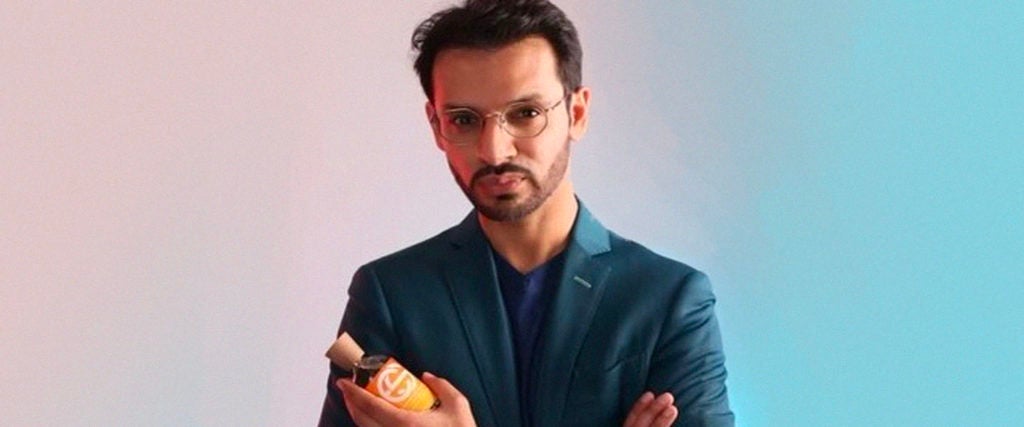If you wanted to, you could buy a fake Chanel purse from the same place you would toilet paper. Counterfeit luxury goods are so rife that their market share in the last 35 years has gone from an estimated $20 billion in 1985 to more than a trillion dollars today. It’s illegal, of course, but there are plenty of gray areas, too. This is particularly true for one luxury good that has birthed its own cottage industry of nearly exact imitations, taking advantage of a legal loophole.
“Let’s say you make $300,000 a year and you travel the world. One day, you stop inside a little indie fragrance shop in Italy and you buy one of their fragrances for $2,000, so that you can feel like you have this extremely exclusive scent,” says Mahsam Raza, the 34-year-old CEO of Dua Fragrances, an independent, niche fragrance house based in California. “If I get my hands on that fragrance, I’m probably going to try to make a copy of it.”
Raza is a master perfumer. He’s also, depending on how you feel about perfume clones, either a vulture or a Robin Hood for luxury aromas. “I make it so everyone can afford exclusive scents,” he says. “I’ve been called a cancer on Facebook, but I don’t care.”
Dua is known for cloning the most exclusive and expensive scents in the world. As an example, Creed Aventus, a top seller in the famed perfume brand’s history, retails for $445. But if you’re cool with a less ornate presentation — one that looks a bit like an Axe Body Spray in a glass bottle — Dua’s clone is only $60. Tom Ford’s Tobacco Vanille is upwards of $160. Raza’s Tom Ford clone? $50. Even Dua’s clone of Roja Chypre — retail price: $1,865 per bottle — is only $75.

A quick lesson on faux luxury goods: A clone isn’t the same as a fake. “Clones aren’t claiming to be the product they’re cloning,” says Robert LaCombe, a moderator of the subreddit /r/fragrance as well as the popular Facebook group, The Fragrance Guru Nation. While fakes attempt to copy everything down to the name and packaging, clones — or “inspirations” as Raza refers to them — have their own unique packaging and, in some cases, not-so-unique names. For example, the Tom Ford scent composed of exotic, smoky woods, is dubbed Tobacco Oud. Raza’s “inspiration” of the same scent is called Tobac Aoud.
This bit of trickery is possible because most fragrance manufacturers can’t trademark their formulas. While some scents, like the smell of Play-Doh, have been trademarked, it’s because the U.S. Patent and Trademark Office determined that the smell served no utilitarian purpose and was distinctive enough to deserve the stamp. The same isn’t true for perfumes, which LaCombe tells me are considered “too abstract” to be subject to trademark laws in the U.S.
To better understand just how difficult it is for a perfumer to trademark their scent, you need not look any further than arguably the most iconic perfume, Chanel No 5, which according to a report from IP WatchDog, “is ineligible for protection despite widespread consumer recognition.” Basically, as long as a consumer isn’t likely to be confused by the identity of a product, which for fragrances is typically confined to the look of the bottle or its name, there’s little to no recourse for luxury brands to prosecute a perfumer dealing in clones.

Raza first began to exploit this fissure in the fragrance-industrial complex in 2015. Though there have been similar attempts to create more affordable fragrances inspired by exclusive scents by retail stores for years, Dua was among the first brands to develop clones and advertise them as such.
Before getting into the fragrancy industry, Raza was a subcontractor working with the United Nations and the State and Defense Departments on a variety of projects, including putting together contracts for air-chartering food drops for South Sudanese refugees and for building training camps for the Somali National Army. But Raza has always been passionate about fragrances, too, and one day he walked into a fragrance shop in Nice, France. The owner asked him what scent he was wearing. It was a blend of Thierry Mugler Angel for men and Tom Ford’s Tobacco Vanille. After the owner asked him why he’d picked those scents to layer, he took Raza down to his basement lab.
“He let me play around with a petri dish, pens and diluted oils,” he says. Raza was instantly hooked. “I went back home to Dubai, which is known for oud [a fragrant, resinous wood used in perfume], and oriental oils and just started experimenting and slowly developed my own scents,” he continues.

Then, in 2015, Raza lost his job as a subcontractor. “I was in my late 30s, married with my first child on the way,” he tells me. Despite his long work history and double MBA from the American University in Dubai, when Raza returned to the U.S., he struggled to find work. “I was working at a gas station wondering what the hell I’m going to do,” he recalls. In fact, Raza says the name for the company he would soon create (“Dua” is Arabic for “prayer”) came to him when he was on his knees on a prayer mat, desperately hoping for someone or something to show him the way.
With encouragement from his wife and mother, who gave him her entire life savings — “she wrote me a check for $25,000, and she told me to pursue my dream” — he started Dua. Next, he went door-to-door and visited 11 different fragrance manufacturing factories in France. “My wife is from France and is a French national,” he says. The 11th factory, the name of which Raza won’t reveal, turned out to be the one that would help him bring his vision to life.
Here’s how his cloning process works: Using a gas chromatography-mass spectrometry (GC-MS) machine, which is typically reserved for drug testing or identifying pollutants in the environment, Raza, with the help of chemists inside the French factory, work together to identify the molecular code of a given fragrance. Then he’ll employ his nose to determine the raw materials necessary to recreate the scent. “I need my nose to smell a scent like ambergris [a solid waxy substance from the intestine of a sperm whale],” he explains. “That way I can pinpoint which material is missing from the perfume.”
Raza tells me to think of the cloning process like so: “What does an architect do? He designs the structure, but his job isn’t to decorate the interior of the structure. You need an interior decorator to fill in the holes and add their vision.” Raza, of course, considers himself the interior designer. The GC-MS machine will formulate the ingredient list, then Raza will add whatever else he thinks the perfume needs to effectively recreate the original scent.
But even then, he says, his “inspirations,” technically speaking, aren’t clones. “It’s impossible,” he vows, explaining that there’s currently no way to create a clone that’s a 100 percent match to the original. (The closest Raza has ever come is 98.2 percent, per the results of his GC-MS analysis.) Either way, this near-identical match — close enough that most noses are unlikely to detect any difference — is precisely where the controversy comes into play. “It just feels like a shot to the original perfumer or perfume house’s work,” LaCombe says. “It’s part of a collector’s mindset that prevents me from owning clones.” There is, however, an original Dua scent called Wood and Cognac that LaCombe tried once. “It was fantastic,” he admits.
Sebastian Jara, another scent enthusiast, runs his own fragrance review channel on YouTube with more than 100,000 subscribers. He’s also “not a fan of clone houses that do nothing but copy fragrances and flat-out claim that [the original] is what they have.” “I work in music legal and you have to obtain rights to use the music,” he says. “Copying isn’t allowed. Copying movies, music and books isn’t allowed. So why not perfumes?”
Naturally, Raza disagrees. “We aren’t saying we’re selling Tom Ford; we’re saying we’re selling our own inspiration of Tom Ford,” he says. “You can’t trademark imaginations.”
Raza’s argument is, ethically speaking, shaky to say the least. But it’s also, anecdotally speaking, not so far-fetched from the practices of more well-known fragrance houses. LaCombe tells me that on forums like Base Notes and Fragrantica, it’s common knowledge which scents are, aromatically, heavily inspired by another perfumer’s scent. “Even larger houses such as Roja Parfums, Xerjoff, Parfums de Marly and even Creed themselves will essentially copy a fragrance or run off that theme,” he explains.
All of which is to say that much of the fragrance industry is an imitation game. “You’ll notice a trend,’” LaCombe continues. “Fragrance A gets released in 2015, then a very, very similar fragrance gets released in 2016. Sometimes they even have the same perfumer — essentially using a blueprint ‘DNA’ and tailoring it slightly differently for an entirely different house.” For example, LaCombe says there’s a great deal of consensus amongst enthusiasts that Roja Scandal Pour Homme is a clone of Dior Eau Sauvage. “Roja Fetish Pour Homme equals Hermes Bel Ami,” he says. “Xerjoff Mefisto equals Creed Silver Mountain Water, and Creed Original Santal equals Montblanc Individuel.”
For Raza, this further affirms that what he’s doing isn’t so unique or unethical. “So many niche brands are selling $5,000 perfumes that are marketed as an original scent,” he says. “We’ve actually replicated those fragrances only to find out that this $5,000 scent took inspiration from a fragrance from the 1940s and recreated said fragrance according to their imagination of what it should smell like in the modern world.” And so, in Raza’s mind, the only real distinction between what he’s doing and what the folks at, say, Estee Lauder — who produce the fragrances for Aramis, DKNY, Ermenegildo Zegna, By Kilian, Jo Malone, Le Labo, Tom Ford, Tommy Hilfiger and Michael Kors — are doing, is that “we tell you exactly what we’re doing.”
What he’s doing is working, too. In the last year alone, Dua has doubled the number of its employees and moved out of Raza’s garage to two different warehouses in San Bernardino. Moreover, he just procured a bottle of An Evening in Taif, a scent created in the 1970s by perfumer Henry Jacques and made bespoke for Sheik Zayed, the ruler of Abu Dhabi for more than 30 years. The 70-milliliter crystal flacon, of which only 100 bottles were re-released, is exclusive to the Henry Jacque boutique in Dubai and priced at approximately $5,100.
Obviously, Raza already has plans to clone it. “They didn’t know who I was, otherwise they would have never sold it to me,” he says. “There are quite a few brands that won’t sell to me anymore. But that’s okay, I still find a way.”

